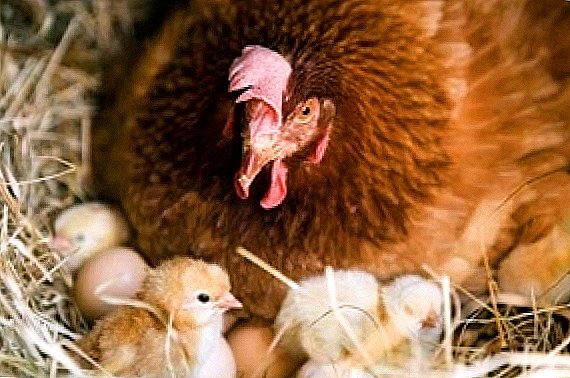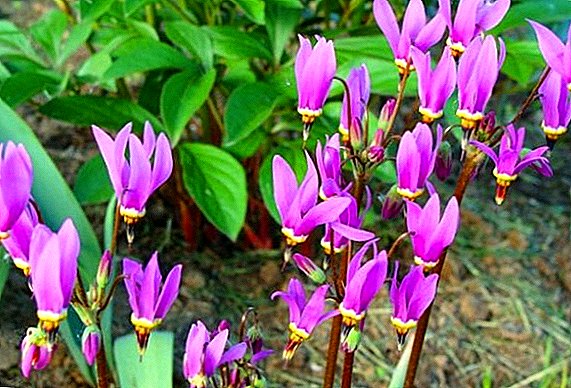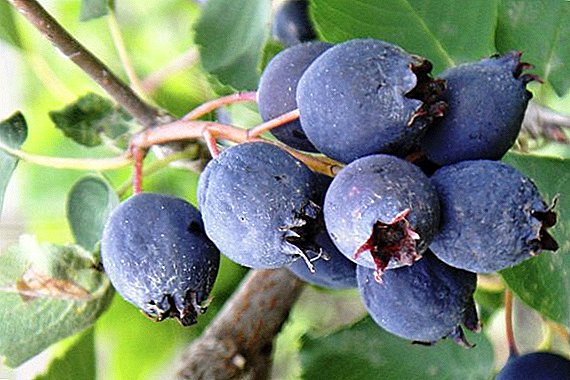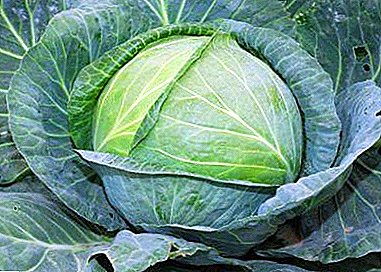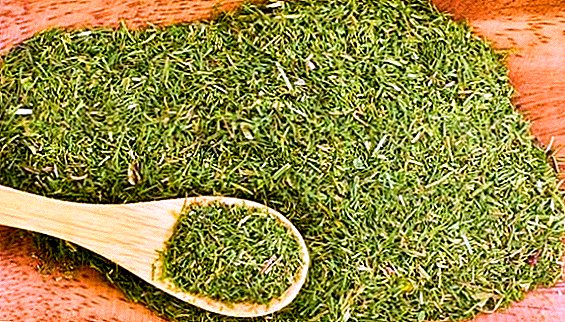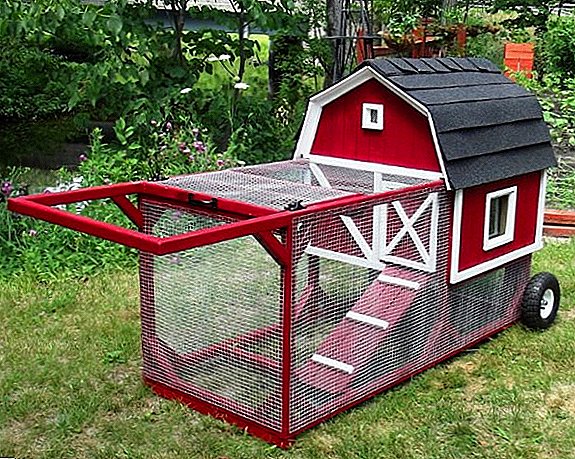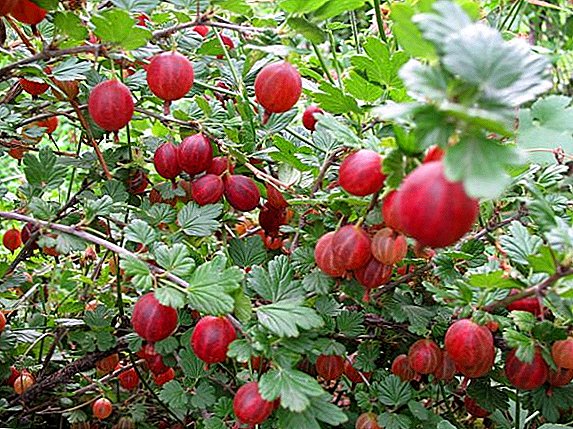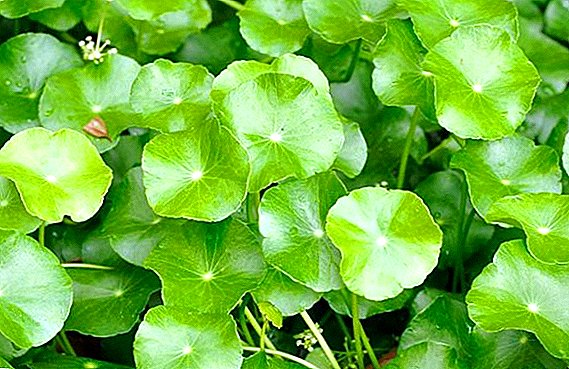 Summer variety of pears "Petrovskaya" was bred in 1959 by crossing hybrids. The tree has an average height and thickness of the crown, the bark is brown and smooth.
Summer variety of pears "Petrovskaya" was bred in 1959 by crossing hybrids. The tree has an average height and thickness of the crown, the bark is brown and smooth.
The main branches are located to the trunk almost at a right angle. The branches are crooked, their arrangement is rare, upward and sideways.
Fruit formations - mixed type. The leaves are medium-sized, saturated in green and have the shape of a wide oval with a jagged edge. The leaf is on a long petiole, the leaf plate is convex, slightly bent downwards. White flowers are small, medium-sized.
Curved pedun elongated, small funnel, small saucer. Seed chamber closed, large seeds, black. Fruit is greenish in color, elongated-pear-shaped with smooth skin, weight approximately 120-135 g.
Peter's pear has practically no subcutaneous points of the fruit. The flesh of its cream color has a delicate, slightly oily structure. The taste of the fruit is sour-sweet, juicy.
The fruits of Peter's pears ripen in mid-August, and the variety fits the description of the fast-growing and high-yielding, fairly cold-resistant.
Did you know? Some pear trees live for up to 300 years.
Landing dates and site selection
Pear seedling is better to take root, if you plant it in September, after the foliage completely falls. If necessary, it is possible to plant pears in the spring, before bud break. Spring landing can be combined with pruning branches. The roots are not cut, but only gently straighten.
Peter's pear varieties require for their favorable development a well-lit place, protected from drafts, without a close location of groundwater, which can be grown on a hill.  The tree grows well in black soil, sandy or loamy soil with weak acidity. If the plot has clay soil, the pears are planted in a planting pit.
The tree grows well in black soil, sandy or loamy soil with weak acidity. If the plot has clay soil, the pears are planted in a planting pit.
Pear "Petrovskaya", like most sweet varieties of pears, is self-fruitless and requires pollen of another pear for its pollination, this should be taken into account when planning the garden and laying 2-3 varieties of pears.
Important! The depth of groundwater should be more than two meters
How to plant pear seedlings "Petrovskaya", step by step instructions
Pear seedlings should have a developed root system and be free from damage to the bark and branches. For further successful fruiting of the pear of Peter, she initially needs to ensure proper planting and care. Consider agrotechnica pears of Peter in more detail. 
Pear can be planted near the place where previously grew plum, cherry or cherry.
Preparing a pit for planting
The pit should be dug 10-14 days before planting the seedling. The landing pit for pears should be 0.6-0.7 m deep and 1 m in diameter. The bottom layer of soil is removed from the pit, and a bucket of peat or rotted manure, superphosphate 250 g, 50 g of potassium sulphate and wood ash are added to the fertile top layer. - 200 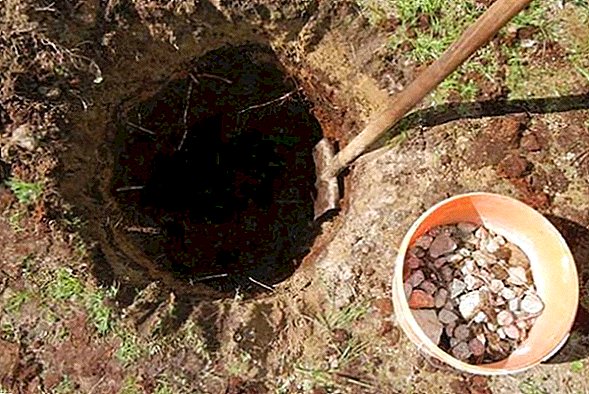 Of the half of this mixture in the planting pit form a mound on which the pear seedling is installed, and the roots evenly spread on the slopes of this hill.
Of the half of this mixture in the planting pit form a mound on which the pear seedling is installed, and the roots evenly spread on the slopes of this hill.  Further planting is to fall asleep planting pits the remaining part of the nutrient mixture with periodic gentle shaking of the seedling for better straightening of the root system. The soil around the tree is well compacted, the root neck should be 3-5 cm above the soil level.
Further planting is to fall asleep planting pits the remaining part of the nutrient mixture with periodic gentle shaking of the seedling for better straightening of the root system. The soil around the tree is well compacted, the root neck should be 3-5 cm above the soil level.  From the south side of the seedling they drive a peg and tie a tree to it according to the "eight" principle. Around the sapling with a roller of the earth they designate the near-barrage zone, plentifully water and mulch the soil with sawdust, bark or needles.
From the south side of the seedling they drive a peg and tie a tree to it according to the "eight" principle. Around the sapling with a roller of the earth they designate the near-barrage zone, plentifully water and mulch the soil with sawdust, bark or needles.
Landing pattern
The “Petrovskaya” pear planting scheme is about 4 x 3 meters, the feeding area of one pear must be at least 12 sq. M. The taller varieties are planted according to the 6 x 5 m scheme, with a feeding area of 25 sq. M. seedling with a good root system.
Important! Adding fresh manure to the planting hole can damage the pear roots, it is impossible to prevent its introduction.

Features care for pear varieties "Petrovskaya"
Peter's pear is quite simple in planting and further care, watering, loosening, infrequent feeding and timely detection and treatment of tree diseases form the basis of cultivation.
Prevention and protection against pests and diseases
As a preventive measure and to protect the pear from pests and diseases, it is necessary to thin out the branches of the tree to ensure oxygen access, remove plant residues, the near-stemming earth should be loosened regularly, when infected branches and fruits are detected, they are immediately cut and burned.
A good effect on the resistance of the pear to infection is spraying with 1% Bordeaux liquid in early spring and late autumn, as well as whitewashing the tree trunk with a solution of lime.
The foliar irrigation of pears with a mixture of Ekoberin, Actofit and Baikal preparations has a beneficial effect on tree immunity and protection against fungal diseases.  Calypso has a preventive effect against pests, the tree it has treated is much less likely to be affected by various insects.
Calypso has a preventive effect against pests, the tree it has treated is much less likely to be affected by various insects.
The most common diseases of pears are:
- scab - it appears as a brown bloom on the leaves, the affected foliage falls down, Nitrafen paste helps

- black fungus - manifested by black spots on the leaves and fruits, get rid of him "Fitoverm"
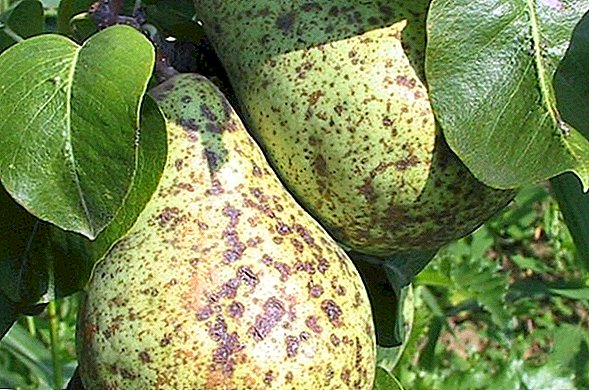
- fruit rot - it is manifested by spots of rot of a brownish hue, spores of rot are easily transferred through the air, get rid of rot by spraying wood with Bordeaux mixture.

- powdery mildew - it is manifested by a grayish bloom on all ground parts of the pear, which subsequently changes to black dots, getting rid of the disease "Fundazole"
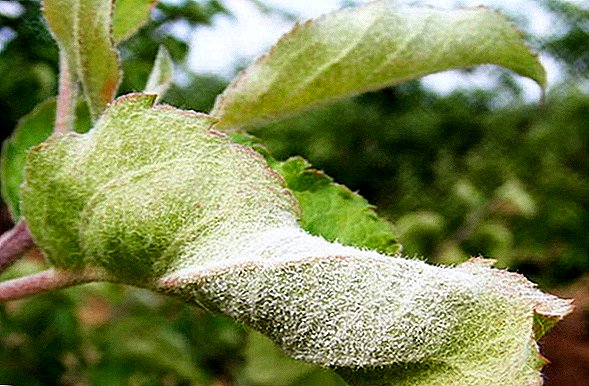
- rust - the disease is manifested by spots on the leaves, which are externally similar to rust, get rid of rust Bordeaux mixture.

Watering, loosening and weeding
Watering a young seedling is carried out every 7-10 days, for one tree it is necessary 10 liters of warm water. In the dry season, the frequency of watering increases.
It is important to ensure adequate watering during the beginning of its flowering and until the end of fruiting. Since August, watering is stopped for the entire autumn-winter period.
The soil in the tree wheel should be loosened regularly; a dry peel should not be allowed after watering the tree. It is important to weed weed, the tree should not contain any plants except pears in order to avoid the lack of moisture and nutrients.
Did you know? The pear wood has a dense and solid texture, after being treated with wood stain, it looks like ebony wood.

Fertilizer and tree top dressing
Poor soils in which the pear grows should be fertilized annually, fertile lands need additional fertilization once every 3-4 years. From the second year after planting pears, you can begin to apply fertilizer at the rate of 8 kg of humus, 20 g of potassium, 10 g of urea per 1 square meter.
Fertilizers are applied in spring or autumn to a previously prepared trench. The moat for feeding is filled with earth mixed with mineral fertilizers, and organic fertilizer is poured on top for better nutrition of the tree with useful substances.
How to trim a pear
Pear pruning is necessary for crown formation without thickening and without fruit-bearing branches. When planting a two-year-old sapling, it is immediately cut off, leaving about four skeletal branches that grow at a 45 ° angle from the trunk.
Branches of pears are shortened by a quarter on one level above the ground for further good development, while the escape-conductor should be 20 cm higher. In the future, pruning of parallel, long and closely growing branches is carried out, thus forming the desired crown shape.
It is desirable to process the cut with a garden bar. Weak, curved and dry shoots are to be removed. Pruning is carried out in an amount not exceeding a quarter of the total number of branches.
When to harvest and how to store the harvest pear varieties "Petrovskaya"
Fruit maturity pear varieties "Peter" comes in mid-August, but possible deviations due to weather conditions. Slight yellowing of the fruit will tell you about their ripeness.
Pears are fairly well preserved on the tree without over-ripening, without dropping for 14–20 days. This property allows you to harvest gradually, selectively as needed. Taste does not deteriorate.
Did you know? One hectare of pear orchard can produce up to 30 tons of fruits
 The fruits of pear "Petrovskaya" are packaged in several pieces and stored in plastic bags with vents for ventilation in the refrigerator. In the presence of the cellar storage is carried out in aerated boxes, which are installed on the shelves at a height of at least half a meter from the ground.
The fruits of pear "Petrovskaya" are packaged in several pieces and stored in plastic bags with vents for ventilation in the refrigerator. In the presence of the cellar storage is carried out in aerated boxes, which are installed on the shelves at a height of at least half a meter from the ground.It is possible to store pear fruits in containers with openings for access of air; fruit containers are placed in these containers up and filled with sawdust or foam chips.
How to prepare a pear for winter
Pear "Petrovskaya" quite hardy, but it is better to be safe and prepare the tree for the winter. For this, the near-barrel circle is mulched with horse manure humus, and the trunk is wrapped with a covering material that allows air to pass through.  In order to protect the bark of pears from damage by hares and mice, the use of a grid from rodents is recommended.
In order to protect the bark of pears from damage by hares and mice, the use of a grid from rodents is recommended.
The advantages and disadvantages of pear "Petrovskaya"
Peter's pear has long been known for its virtues: the good taste of summer ripening fruits, which are securely mounted on a tree and do not fall before harvest, the variety is skoroploden, quite resistant to diseases, but there are also disadvantages: the harvest is about two weeks in the rainy season fruits are less tasty and become watery, thickening the crown of the tree reduces the size of the fruit.  The advantages of the "Petrovskaya" pear, as well as the appearance of its fruits and their taste qualities, have given it a worthy place in country houses and personal plots, and the simple care of the tree, which even an inexperienced gardener will have a positive role in choosing her seedling
The advantages of the "Petrovskaya" pear, as well as the appearance of its fruits and their taste qualities, have given it a worthy place in country houses and personal plots, and the simple care of the tree, which even an inexperienced gardener will have a positive role in choosing her seedling







